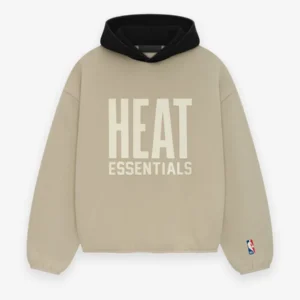If your facility handles packaging—be it for food, snacks, dairy, or beverage products—you might be thinking: “We don’t manufacture food; is HACCP really our business?” The answer is yes—and more than you expect. Packaging is often the final line of defense. Even if your role is secondary (you package someone else’s product), contamination, cross-contact, or process lapses in your unit can neutralize all upstream safety work. HACCP certification signals that you treat safety as part of your job, not someone else’s. It bolsters client trust, strengthens audits, and helps you compete for premium contracts. In short: packaging units that ignore HACCP risk becoming weak links in the safety chain.
What HACCP Certification Actually Means for Packaging Lines
HACCP (Hazard Analysis and Critical Control Points) is a preventive food safety philosophy. Rather than discovering problems post-factum, it forces you to identify where hazards might enter the process and to control them before they escalate. For packaging units, this involves examining raw packaging materials, coating processes, sealing, filling environment, handling, cleaning, supplier inputs, and controlled storage. HACCP certification means a third party (or certification scheme) has reviewed your plan, observed your execution, and judged that your system meets recognized standards (e.g. ISO 22000, GFSI food safety systems, or local regulatory expectations). It’s not a guarantee of zero risk, but a structured safety net showing you’ve reduced your vulnerabilities to acceptable levels.
The Unique Hazards Packaging Units Face
Packaging units operate in a space between primary processing and final product delivery. That exposes you to a few distinct risks. First, foreign body contamination—fragments of packaging film, metal from machinery, plastic shards—can slip in. Second, chemical residues from printing inks, adhesives, or cleaning agents may migrate into the packaged product. Third, microbial contamination from ambient dust, humidity, or unclean interiors can compromise sterility or shelf life of food inside. Fourth, allergen cross-contact if your packaging lines serve multiple SKUs (e.g. nut products, dairy, gluten). For each of these hazard classes—physical, chemical, biological—you must imagine how they could enter your line, what control points you already have (or need), and how to systematically monitor and remediate. That’s the heart of HACCP for packaging.
Making HACCP Work Day-to-Day in Packaging Environments
To survive in the real world, your HACCP system must integrate with your workflows—not sit as a separate layer. Start by placing visual reminders—flow charts, warning signs, control limit posters—near critical packaging stations. Use concise checklists rather than voluminous manuals. Consider piloting your plan on one shift or one packaging line; use feedback to refine before scaling. Walk the floor often, review logs, coach operators early, and handle deviations promptly. Trends matter: track near misses, excursions, or patterns over time. Involve multiple teams—maintenance, cleaning, printing, operators—not just quality. Recognize improvements: when a line stabilizes a CCP, or defect rates drop, share success. When staff see benefits—not burden—they’ll internalize safety as part of their job.
Certification Options & Which One Fits Packaging Units Best
“HACCP certification” is not monolithic. Some packaging units adopt ISO 22000, integrating HACCP into a broader food safety management system. Others follow GFSI-recognized schemes (like BRC, SQF) which incorporate HACCP certification into their framework. Depending on client demands or export markets, you might need one over the other. In some jurisdictions, local regulatory HACCP recognition might suffice. Your choice should align with what your customers or buyers expect. For example, if your packaging feeds into a brand exporting to the EU or Gulf, a scheme like BRC (which includes packaging requirements) might be more appropriate than standalone HACCP. Always check the demands of your downstream clients before settling.
A Packaging Unit Story (Hypothetical but Insightful)
Consider a mid-size packaging facility specializing in sachets and wrappers. They handled coatings, printing, filling, heat sealing, and conveyor transfer steps. Their existing controls included metal detectors and visual inspections. But they lacked systematic hazard mapping, ambient hygiene monitoring, and coherent corrective systems. After hiring a food safety consultant and conducting a gap analysis, they discovered chemical migration risk from ink solvents, cross-contact of allergens due to shared lines, and weak cleaning validation schedules. They pilot-tested HACCP on one line, installed sensor monitors, trained operators, revised traffic flow to reduce contamination zones, and began consistent recordkeeping. After six months, an external auditor accepted their system with minimal nonconformities. They extended HACCP to all lines, saw packaging defect reductions, fewer customer complaints, and stronger trust from brand clients. The transformation wasn’t instant—but by living the system, the packaging unit became a partner in food safety, not just a service provider.
What Auditors Zero In On (So You Can Be Audit-Ready)
Understanding what auditors prioritize can help your readiness. They will examine whether your hazard analysis is logically tied to your process flow; whether CCPs are sensibly chosen and critical limits scientifically justified; whether monitoring records are consistent, timestamped, and signed; whether deviations show meaningful corrective action (with root cause and preventive steps); whether your calibration and maintenance history is intact; whether verification and revalidation occur, especially after changes; and whether internal audits and management reviews show your system adapts and improves. Any mismatch between SOPs and actual practice will be flagged. The more alignment between your documented systems and real operations, the smoother your audit will go.
Integration with Other Quality, Safety, and Compliance Systems
Many packaging units already operate under GMP, ISO 9001, or HACCP-adjacent systems. Merging HACCP into what you already have—rather than building a standalone silo—reduces duplication and confusion. For instance, cleaning SOPs, calibration schedules, staff training records, and internal audits can be shared across systems. A single internal audit may check for GMP, HACCP, hygiene, and safety elements rather than separate audits for each. A consultant experienced in integrated systems can help you weave your HACCP controls into your existing workflows, helping your packaging operations run leaner and more coherently.
Cultivating a Safety Culture in Packaging Teams
At its heart, HACCP is as much about people as processes. No plan survives if operators, maintenance, and cleaning teams don’t feel invested. That requires clear communication of why these checks matter. Involve staff early in hazard discussions. Encourage their feedback on how to make monitoring workable without slowing down production. Use visual cues and dashboards to make safety performance visible. Recognize consistent compliance or improvement. Create safe channels to report near misses or concerns without blame. When your entire team sees safety as part of their craft—not extra chores—HACCP becomes lived, not forced.
Final Thoughts: Certification Opens the Door; Habit Keeps It Open
HACCP certification for a packaging unit is a powerful signal—but it’s not the finish line. Your real success lies in making the system active: daily monitoring, trend reviews, audits, corrective loops, and adaptation whenever your product mix, machinery, or client demands change. Packages often carry the final physical touch the consumer sees—so the margin for error is thin. Packaging units that treat HACCP as a dynamic, evolving system rather than a static document end up safer, more efficient, more trusted, and more competitive. If you want help with a starter HACCP packaging plan, a CCP worksheet for your lines, or mapping this to your local regulations, just say the word—I’m happy to assist.








